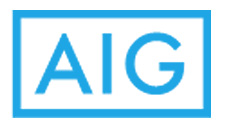The global company earned $3.74 billion in net income, compared to a net loss of $60 million in the previous quarter. Its adjusted after-tax income, which Wall Street analysts closely monitor as a measure of recurring revenue and profit, totaled $1.34 billion, a 62 percent increase from $827 million.
Underwriting losses from the company's businesses of selling travel and event cancellation insurance, as well as reinsurance through its Validus unit, marred the previous year's results. Storms and other natural disasters also increased costs in the previous quarter.
AIG is one of the world's largest sellers of property and casualty insurance to business clients worldwide, based on premium volume. It is also a leading insurer of wealthy households and a top seller of travel insurance in the United States. AIG is separating its life insurance and retirement services division into a separate company.
In the earnings release, AIG Chief Executive Peter Zaffino stated that the company's property-and-casualty unit continued to improve its underwriting profitability through "excellent top-line growth and vastly reduced volatility." This is due to a recent overhaul that limited exposure to specific product lines and entailed numerous other changes to improve results.
Mr. Zaffino oversaw AIG's turnaround as CEO of the property-and-casualty unit known as General Insurance in recent years, and he was named CEO of the parent company in March 2021. In January, he added the title of AIG chairman to his resume.
AIG reported a 7% increase in net premiums written for the General Insurance unit, to $5.96 billion, due to premium rate increases and the sale of new policies. The total included a 13% increase in global commercial-insurance premiums to $4.12 billion and an 18% increase in the company's North American personal-insurance unit to $434 million.
This was fueled in part by a rebound in travel insurance sales as Americans' fears of Covid-19 subsided enough to allow them to fly again.
AIG is the latest in a long line of commercial insurers to announce rate increases for corporate clients. Those predate the rapidly rising inflation that erupted in the United States last year, and instead trace back to a price war that ended several years ago.
During the company's earnings call on Thursday, AIG executives are expected to provide details on the average fourth-quarter premium-rate increases. The press release mentioned "significant incremental rate improvement."
AIG began notifying brokers in wildfire-prone California late last year that it will not renew the home policies of currently insured clients, totaling about 9,000 high-net-worth households, as part of changes to address catastrophe risk. AIG stated that some policyholders may be eligible for coverage through another AIG unit that has more rate and term flexibility than carriers operating in the state's tightly regulated mainstream home-insurance market.
The General Insurance unit's adjusted pretax income increased by 87 percent to $1.51 billion, which included $189 million in catastrophe costs, primarily from tornadoes in Kentucky and other southern states, as well as wildfires.
This compares to $545 million in catastrophe losses in the previous quarter. In the 2020 period, AIG recorded $178 million in estimated Covid-19 losses as a catastrophe cost, along with $367 million in natural disaster losses, mostly from hurricanes.
For the most recent fourth quarter, AIG's Life and Retirement unit reported adjusted pretax income of $969 million, a 5.6 percent decrease. The decline was caused in part by Covid-19-related deaths. Higher annuity sales, fee income, and alternative investment income offset some of the bottom-line pressures.
Life insurers have reported strong gains from the small portion of their investment portfolio that is allocated to private-equity funds and other nontraditional holdings across the industry. In general, life insurers buy bonds to back up their customers' life insurance and other policies, and ultralow interest rates have lowered investment yields.














